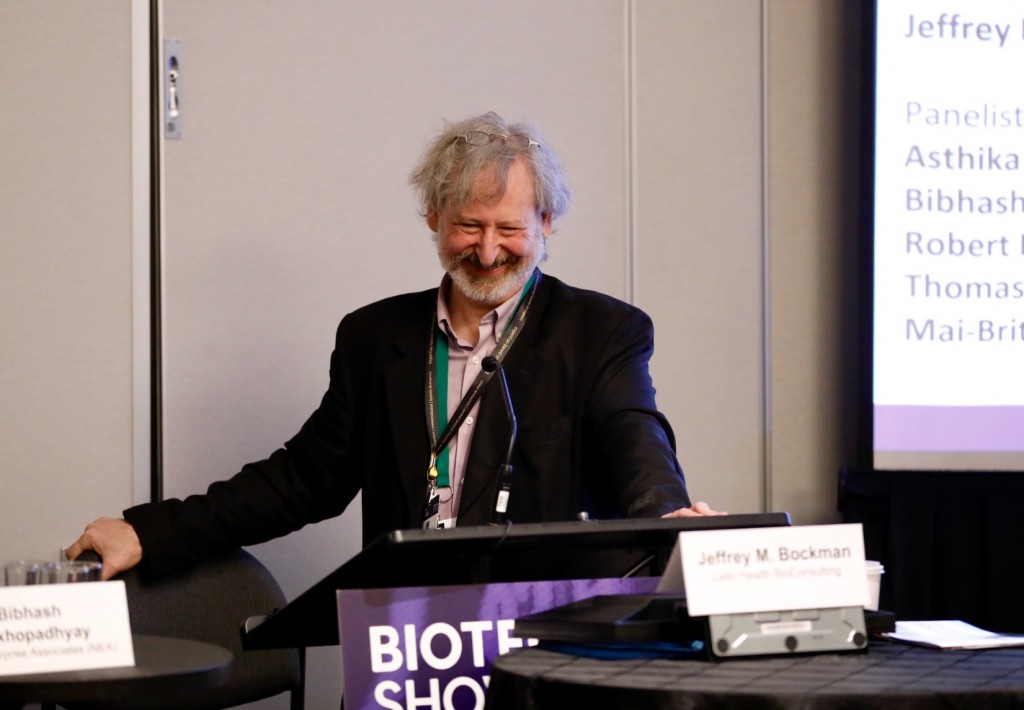The first generation of immuno-oncology (IO) was a paradigm shift, but outcomes aren’t living up to their promise. Neither are combination therapies. “There’s a disconnect between science and the clinic results,” says Jeffrey M. Bockman, EVP, oncology practice head, Cello Health BioConsulting, and moderator for the 2019 Biotech Showcase panel discussion, Investing in Next Gen Immunotherapies.
If IO is generating less than stellar outcomes, the question then, becomes “What should we do differently?”
“The main thing we’ve skipped is a rigorous evaluation of the combination hypothesis,” says Thomas J. Schuetz, co-founder and CEO, Compass Therapeutics.
“A therapeutic hypothesis should be similar to a label statement,” Robert Ross, chief medical office, Surface Oncology, emphasizes. It should detail how the drug will be used and for which patients. Usually, it will include a biomarker or a companion diagnostic. “For small biotechs, this is critical: identify the tumors and how to select them in the clinic.”
Throughout the growing field of IO, “We need to raise the bar in our scientific evaluation of our premise. Common wisdom says that preclinical models don’t predict what happens in the clinic. That’s the same wisdom that says it’s easy to cure cancer in a mouse. “That’s fundamentally incorrect. It’s almost impossible in reality,” Schuetz quips. There’s a clear disconnect between hypothesis and the clinic.
That said, “many of the models for IO are quite predictive,” Schuetz continues. Many failures were expected, but were made spectacular because they occurred during Phase III trials, after huge investments of monies and time.
“Part of the issue is combination bias,” Ross says. “Combination therapies are complex. When two agents are combined, it’s difficult to understand in a single arm trial whether the combination eliciting a true combinatorial response. But, if the response rate is high, you want to believe it.” This bias can lead to disappointing outcomes.
Combination therapies may offer notable benefits, as do bi-specific molecules. But, Schuetz cautions, “Not every situation is amenable to a bi-specific. Just because you can put two things together as a molecule doesn’t mean you should. You need rigorous science demonstrating they are more powerful together than individually.”
When considering an approach to IO, think broadly about the value proposition, Bockman advises. “What else is going on with that target or tumor type?” There may be multiple approaches, including CAR-T cells, vaccinations and antibody therapies that may be equally effective. In that case, what value does your approach bring that others don’t offer? “This advice has always been true, but IO has kicked it up a notch.”
Also consider potential issues. “Some patients will have incredible benefits from CAR-T therapeutics,” Ross says, “but the therapeutics have issues around manufacturing and dosages. Those are engineering issues, and engineering issues always are solved over time. Solid tumors are a tough nut to crack. Finding the right target and antigen is incredibly difficult.”
Know the micro-environment
IO is way behind in understanding specific tumor micro-environments, panelists agree. They compared the development process to “throwing spaghetti on the wall to see what sticks,” or more generously, “a checkerboard approach.” The rationale for this approach is that the program is immune-related and may have generated promising data during small studies. Consequently, “investors got behind it,” Asthika Goonewardene, senior biotechnology analyst, Bloomberg Intelligence, says, generating sometimes unjustified confidence that, when failures ensue, harms the broader field.
A better approach, panelists say, is to match therapeutics to patients based on tight similarity between patients’ tumor micro-environments and those of the most successful mouse models. The challenge is “to understand all the signals of the micro-environment and translate them to the clinical setting,” Mai-Britt Zocca, CEO at IO Biotech points out.
The IO companies that have succeeded in the past five to six years are those who took a more rigorous approach to their preclinical work. That means understanding the pharmacodynamics, biomarkers, responses, clinical hypotheses as well as the broad field of alternative approaches and targets.
“Immunotherapy isn’t simple to understand,” Bibhash Mukhopadhyay, principal, New Enterprise Associates, underscores. If a company’s preclinical work is tied to the science and it has a bridge to make a drug of the compound—a translational pathway—the company is more likely to succeed, he says. But, he cautions, this isn’t achieved by using single tools. “It’s not a matter of starting with an antiviral, putting it into a cocktail and seeing results. IO is a multi-toggle switch.”
Instead, companies need multiple tools—and trials—to prove the complex systems of tumors as well as immunology and to extrapolate results from preclinical to clinical trials. “Things go wrong, so go back to the basics!” Mukhopadhyay says.
Big data analytics is a critical tool in developing that success, panelists agree. Big pharma, in particular, should be mining data from its vast databanks. That includes learnings from successful trials as well as from failures, Bockman says.
Surface Oncology, for example, looks for tumor banks it can interrogate with its tools. Academic tumor banks provide a window into the tumor micro-environment, but an even better option is to work with big pharma to interrogate their much larger tissue banks to gain deeper insights.
Broadening clinical trials is another approach. The ADaptiVe Biomarker Trial that InformS Evolution of Therapy (ADVISE) study being conducted now by BMS is one example. “It is conducting virtually every test possible on about 50 patients. There’s approximately seven arms of the study,” Goonewardene says. “That approach must be very expensive, but it must be done,” he stresses, to understand biomarkers to help investigators select treatments—including combination therapies—that have the best chances of success for individual patients.
IO is a viable approach to cancer therapeutics, the panelists agreed. “We have transcended the checkerboard, spaghetti-on-the-wall approach,” Mukhopadhyay says. The way forward now is a mechanistic approach. It’s the only way to tie mechanisms to clinical outcomes.”


